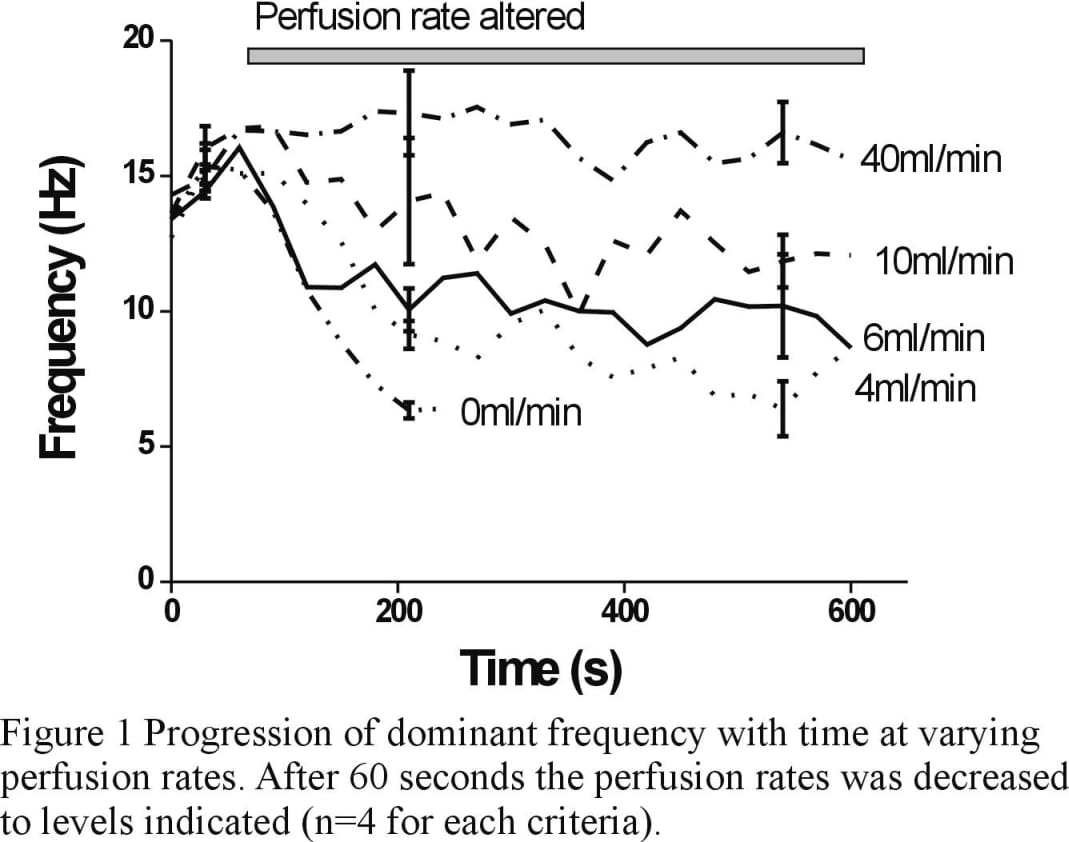Clinical studies suggest that as ventricular fibrillation (VF) progresses in humans its frequency decreases and survival likelihood diminishes. Normally myocardial perfusion is minimal during VF. Thus the changes in VF frequency may be associated with progressive ischaemia of the myocardium. Hearts were removed from New Zealand white rabbits under terminal anaesthesia (1mg/kg phenobarbitone) and Langendorff perfused at 40ml/min with Tyrodes solution at 37 degrees centrigrade. Electrocardiogram signals were recorded from electrodes placed in the bath. VF was induced by rapid pacing (50Hz for 8s) and recordings were taken every 30s. Using Fourier transform the dominant frequency (DF) was calculated for each epoch.Figure 1 shows the progressive changes in DF with varying perfusion rates. Perfusion rates lower than control were associated with a decreasing dominant frequency. In general lower perfusion rates produced more rapid declines in DF.These results suggest that dominant frequency changes during VF are caused by reduced myocardial perfusion. Further studies are required to identify the underlying metabolic cause of this effect.
University of Glasgow (2004) J Physiol 557P, C11
Communications: The effects of perfusion rate on the dominant frequency of ventricular fibrillation in isolated rabbit heart
J.C. Caldwell,F.L. Burton, S.M. Cobbe and G.L. Smith
Biological and Life Sciences, Universiry of Glasgow, Glasgow, UK and Section of Medical Cardiology and Exercise Medicine, Glasgow Royal Infirmary NHS University Trust, Glasgow, UK
View other abstracts by:
Where applicable, experiments conform with Society ethical requirements.

